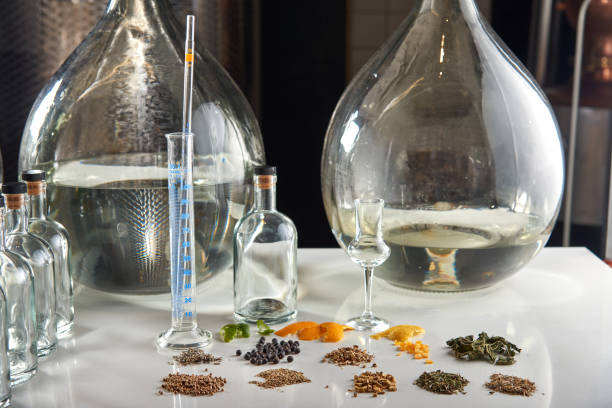Calories are an essential aspect of our daily diet and play a crucial role in our overall health and well-being. Alcoholic beverages are one of the primary sources of calories in our diets, and gin is one of the most popular alcoholic drinks consumed worldwide. In this article, we’ll be exploring the calorie content of a bottle of gin and how it affects our diet and health.
Gin is a distilled alcoholic beverage that is made from juniper berries, and its calorie content varies depending on its alcohol by volume (ABV) and serving size. A standard bottle of gin contains approximately 750 milliliters of liquid, and the average gin has an ABV of 40%. This means that a bottle of gin contains approximately 300 grams of pure alcohol, which translates to about 1200 calories.
Alcohol is a high-calorie substance, with 7 calories per gram, making it second only to fat in terms of calorie content. This means that a bottle of gin contains a significant amount of calories, which can quickly add up and contribute to weight gain if consumed in excess. The calorie content of gin can also be increased by adding mixers, such as tonic water or soda, which can add an additional 100-150 calories per serving.
In addition to its high calorie content, gin can also have a negative impact on our health in other ways. Alcohol is known to increase our appetite and reduce our inhibitions, making us more likely to indulge in unhealthy foods and overeat. Alcohol also slows down the metabolism, making it more difficult for our bodies to burn calories.
Consuming large amounts of alcohol can also lead to dehydration, as alcohol acts as a diuretic, causing our bodies to lose fluids and leading to dehydration. Dehydration can lead to a variety of health problems, including headaches, fatigue, and impaired cognitive function. It is also essential to note that excessive alcohol consumption can increase the risk of developing liver disease, high blood pressure, and various types of cancer.
So, how can we enjoy gin while still maintaining a healthy diet and lifestyle? The key is moderation. The American Heart Association recommends that women limit their alcohol intake to one drink per day and men limit their alcohol intake to two drinks per day. A standard serving of gin is considered to be one and a half ounces, which is about 45 milliliters.
When drinking gin, it is also essential to choose low-calorie mixers, such as diet tonic water or club soda. These mixers can significantly reduce the calorie content of a gin and tonic, making it a healthier choice. Drinking gin with fresh fruit juices, such as grapefruit or orange juice, can also add flavor and reduce the calorie content of the drink.
In conclusion, gin is a high-calorie alcoholic beverage that can have a significant impact on our health and diet if consumed in excess. However, by limiting our intake and choosing low-calorie mixers, we can still enjoy gin while maintaining a healthy and balanced diet. It is important to remember that moderation is key when it comes to alcohol consumption and to always drink responsibly.
In conclusion, gin, like any alcoholic drink, contains a significant number of calories, and its calorie content varies depending on its alcohol by volume and serving size. It’s important to consume gin in moderation, limit our intake, and choose low-calorie mixers to reduce the calorie content of our drinks. By doing so, we can enjoy gin while still maintaining a healthy diet and lifestyle.

 Home
Home Health
Health Diet & Nutrition
Diet & Nutrition Living Well
Living Well More
More












